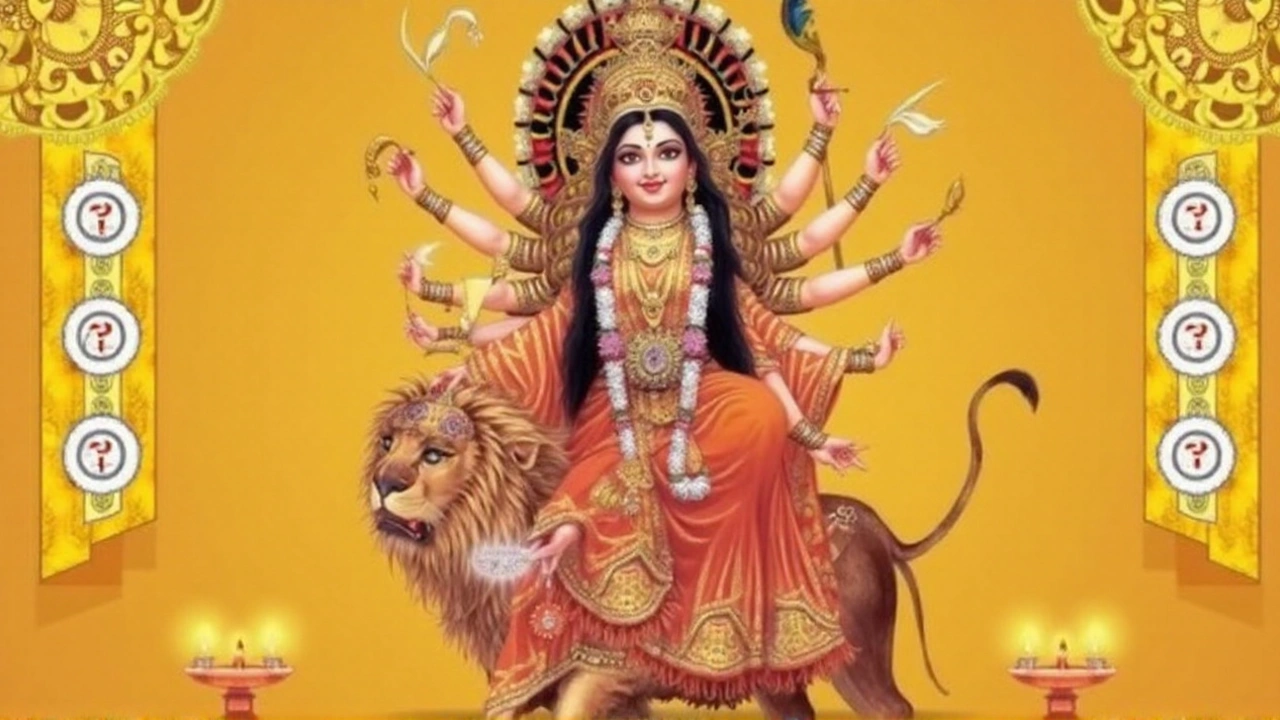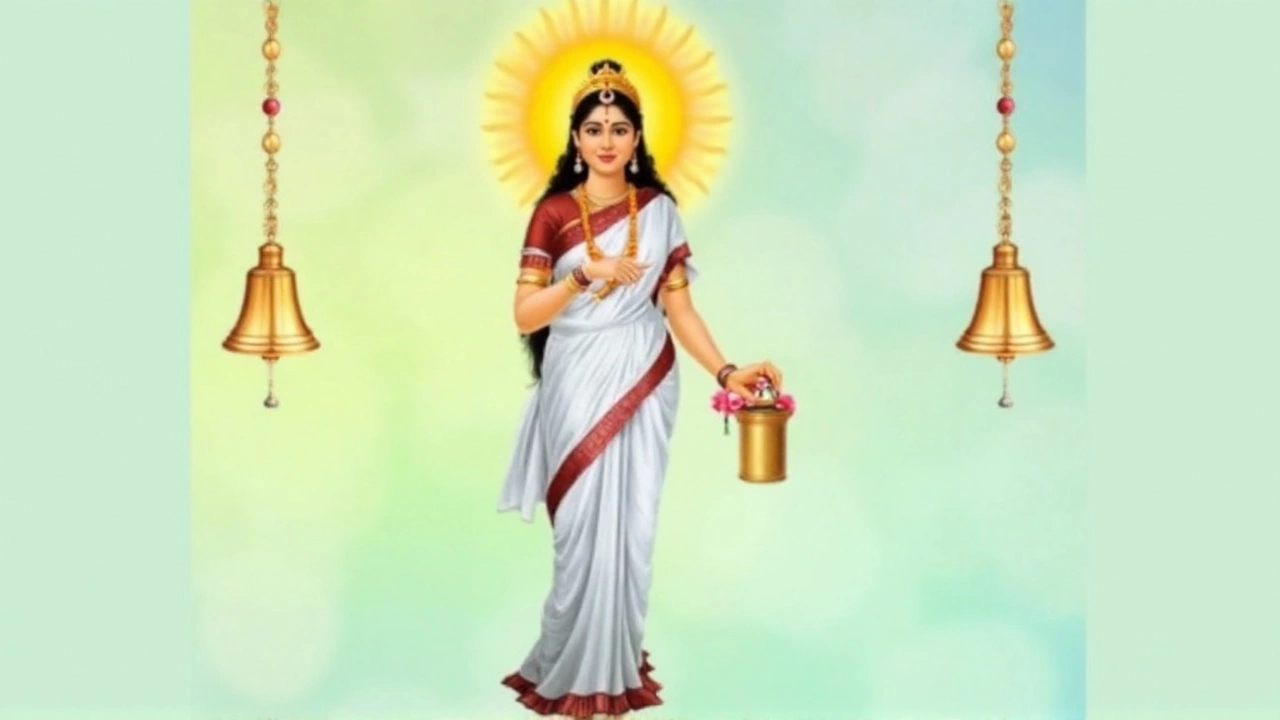Understanding Maa Brahmacharini and Her Significance
On the second day of Sharad Navratri, devotees turn their attention to Maa Brahmacharini, the embodiment of steadfast devotion and spiritual discipline. She is the second avatar of Goddess Durga and is often called the Goddess of Penance because she represents the inner fire that fuels perseverance. In traditional depictions she wears a pristine white saree, holds a rosary (japa mala) in her right hand and a kamandal (water pot) in her left, symbolising the balance between contemplation and purification.
The name Brahmacharini itself comes from two Sanskrit words: ‘Brahma’ meaning divine knowledge and ‘Charini’ meaning one who walks the path. She is also revered as Devi Yogini or Devi Tapasvini, reinforcing her link to yogic practice and austerity. For those seeking mental clarity, strength, and a boost in wisdom, worshipping her on this day is believed to unlock those virtues.

Step‑by‑Step Puja Guide, Timings, and Kalashsthapana
Performing the puja correctly can deepen the spiritual experience. Below is a practical roadmap that you can follow at home or in a community hall.
- Auspicious Muḥūrtas: Begin early before sunrise during Brahma Muhurat, continue with a midday Abhijit Muhurat, and finish the main offerings at Sandhya Muhurat (twilight). These windows are regarded as especially potent for prayers.
- Preparation: Take a cleansing bath at dawn, wear clean traditional attire—white or light pastel hues are preferred to mirror the Goddess’s purity.
- Altar Setup: Place a small idol or framed image of Maa Brahmacharini on a clean cloth. Surround it with a rangoli of white rice and a few diyas (oil lamps).
- Lighting & Sound: Light an oil lamp using pure desi cow ghee, followed by incense sticks. Ring a bell to announce the start of the ritual; the sound is said to ward off negative energies.
- Purification: Sprinkle holy water (Ganga jal) over the deity while reciting "Om Devi Brahmacharinyai Namah" to cleanse the space.
- Flower Offering: Fresh red hibiscus flowers—her favorite—are presented one by one, each accompanied by the same mantra.
- Tilak & Bathing: Apply a sandalwood tilak on the idol’s forehead, then perform an ablution using milk, curd, ghee, and honey. This symbolic bathing is called ‘Abhisheka’ and represents nourishment of the soul.
- Additional Bhog: Offer Akshat (raw rice mixed with turmeric), roli (sugar cubes), sandalwood paste, seasonal fruits, and sweets like peda or laddu. These items are later distributed as prasad.
- Aarti: Move clockwise around the altar, waving a camphor‑lit incense. The rhythmic chant of the aarti brings the atmosphere to a crescendo.
- Mantra Chanting: End the session with the powerful mantra "Om Amritapushtaye Namah" repeated 108 times. This mantra is believed to grant long life and spiritual nourishment.
Once the primary puja finishes, the Kalashsthapana ceremony begins—a centerpiece of Day 2 worship.
- Kalash Construction: Choose a shallow clay pot, line it with three layers of mud, and fill it with seven or nine grains (Sapta/ Navadhanya) such as barley, wheat, and rice.
- Water & Blessings: Add Ganga jal, a few betel nuts (Supari), coins, Akshat, and a bunch of Durva grass. Draw a red Kumkum Swastik on the pot’s surface for auspiciousness.
- Decoration: Place five mango leaves around the neck of the Kalash and crown it with a coconut wrapped in a red cloth. Light an Akhand Jyoti (continuous lamp) that will burn for the entire nine‑day Navratri.
Keeping the Kalash lit throughout Navratri is said to invite the Goddess’s continued blessings, especially in matters of health, knowledge, and perseverance.
Beyond the ceremonial aspects, the day also calls for personal reflection. Many devotees keep a journal, noting challenges they face and pledging to overcome them with the same dedication Maa Brahmacharini displayed.
Practical tips:
- Prepare all offerings a day in advance to avoid rush during the muhurat.
- If you cannot find hibiscus, substitute with white jasmine—still considered pure.
- Use a small, portable speaker to play devotional bhajans softly in the background; music helps maintain a meditative mood.
- Invite children to help with simple tasks like arranging the rangoli or lighting the diyas—this instils the values of devotion early on.
By following these steps, worshippers not only honor the divine but also cultivate inner strength, clarity, and a resilient mindset—qualities that are especially valuable in today’s fast‑paced world.
